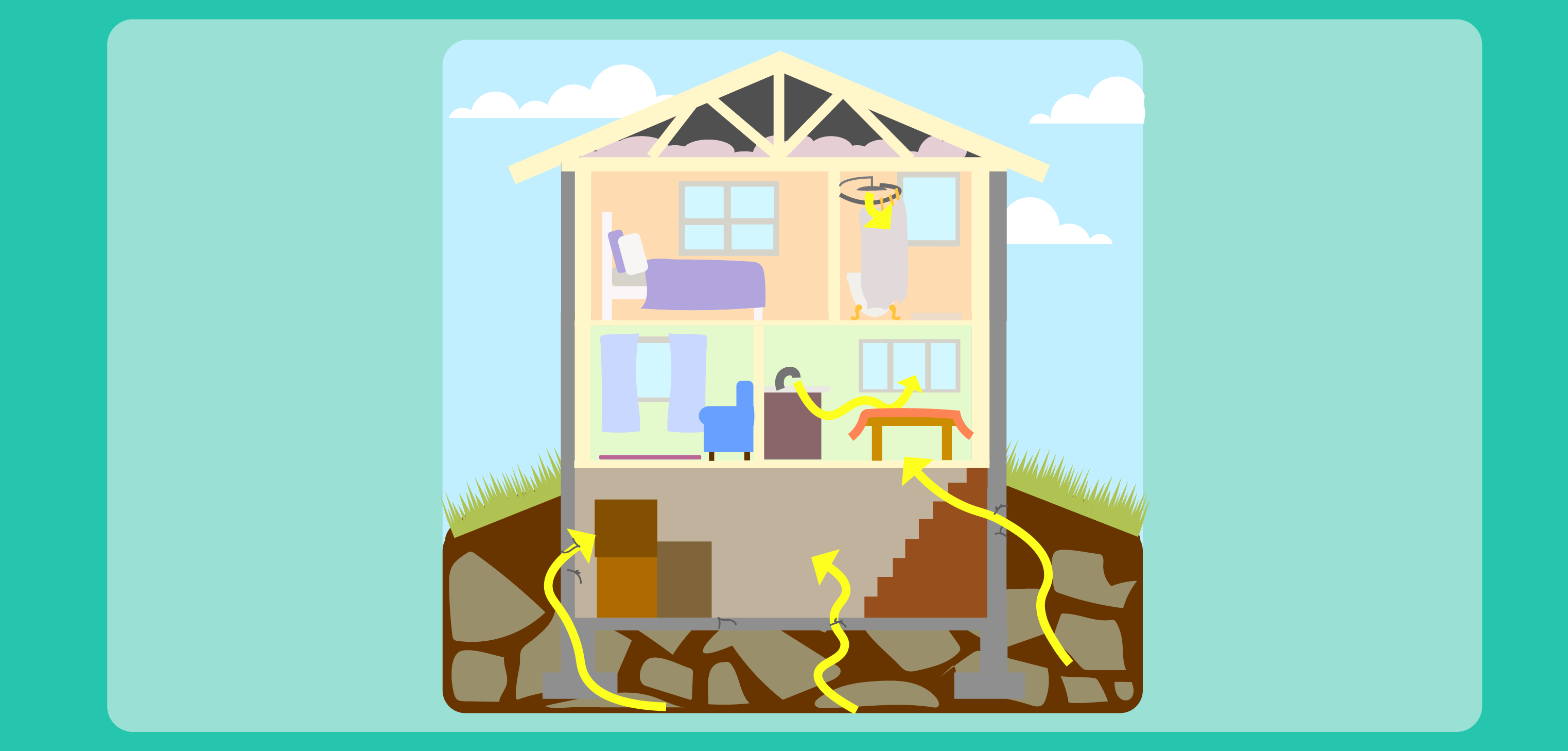RadTown Radon Activity 3: Indoor Radon Levels
Radon is a threat to health because it can collect inside homes and buildings in high levels, and can cause lung cancer. In this activity, students will learn more about how to test their homes for radon, and will learn what different radon levels mean. This activity is intended for middle and high school students.
- Objectives
- Next Generation Science Standards
- Materials and Resources
- Printable Worksheets and Classroom Aids
- Time
- Vocabulary
- Directions
- Common Core State Standards
Objectives
Students will:
- Learn about types of radon testing.
- Analyze radon testing data.
- Compare the data with the Environmental Protection Agency’s (EPA) recommendations.
- Recommend whether to fix the radon levels based on the average indoor radon level.
Next Generation Science Standards
The concepts in this activity can be used to support the following science standards:
- ESS2. Earth’s Systems
- ESS3. Earth and Human Activity
Materials and Resources
Each italicized document title can be found at the bottom of this page, and is available for printing and distribution.
- Radon: Teacher Background Information
- Vocabulary Materials
- Radon Testing Device image
- Computer and projector to display the Radon Testing Device image
- Radon Testing Worksheet (one per student, pair or group) and Radon Testing Teacher Answer Key
- Radon test kit information:
Printable Worksheets and Classroom Aids
Time
30-45 minutes, not including optional activities or extensions.
Vocabulary
- Ionizing radiation
- Radiation
- Radon
- Uranium
Directions
- Start with a vocabulary activity if students are not familiar with radon and the terms used in this activity.
- Explain that radon is a radioactive gas that comes from the decay of uranium in rock and soil. Human activities, such as uranium mining, can increase the risk of radon exposure. During the mid-1940s to 1970s, the U.S. was in a race with the Soviet Union to develop and test nuclear weapons. Nuclear power was also introduced during this time. Thousands of uranium mines were in operation, primarily in the Western part of the U.S., and nuclear testing was taking place in the West and in Alaska.
When the demand for uranium decreased, uranium mines and testing areas were abandoned, leaving contaminated soil and water with high radon levels in the areas surrounding mines.
Radon is a threat to health because it tends to collect inside homes and buildings, sometimes to very high levels, and can cause lung cancer. Any home or building may have a radon problem, including new and old homes, well-sealed and drafty homes, and homes with or without basements. On average, one out of every fifteen U.S. homes has a problem.
- Ask students how they can test radon levels in their home. Students should be able to state that they can purchase a test kit or have a professional test their home for radon. Radon testing is necessary because we cannot detect radon by smell or sight. Students can visit Where Can I Get a Radon Test Kit?.
- Display the Radon Testing Devices image. Explain that there are short-term and long-term testing options. Short-term tests remain in a home for 2 to 90 days, depending on the device. Long- term tests remain in your home for more than 90 days. A short-term test is less likely than a long-term test to tell you your year-round average radon level so you may want to follow up with a second short-term test to confirm the results of the first. Short-term charcoal canister tests are left in the home for 2 to 7 days to capture radon levels whereas long-term alpha track detectors can be left in the home for 90 days to a year.
- Distribute the Radon Testing Worksheet. Have students completed the worksheet and share their responses. The Radon Testing Teacher Answer Key is provided.
- Conclude by discussing the importance of testing homes for radon.
- Optional activities or extensions:
- Contact your state radon program or the regional EPA office and see if it has radon data from your area that can be charted and analyzed by students.
- Determine if you can get radon test kits and the analyses paid for so that each student can test their home for radon. Have students compile and analyze the data.
- Have students create posters, raps, videos or other media messages to stress the importance of radon testing.
- Have students create posters for the National Radon Poster Contest.
The concepts in the Indoor Radon Levels activity align with the following:
- CSS English Language Arts Standards for Literacy in History/Social Studies, Science, & Technical Subjects
- CCSS.ELA-LITERACY.SL.6-12.2 Comprehension and Collaboration
- CCSS.ELA-LITERACY.SL.6-12.5 Presentation of Knowledge and Ideas
- CCSS.ELA-LITERACY.WHST.6-12.1 Text Types and Purposes
- CCSS Mathematics Standards
- CCSS.MATH.PRACTICE.MP1
- CCSS.MATH.PRACTICE.MP2
- CCSS.MATH.PRACTICE.MP5

